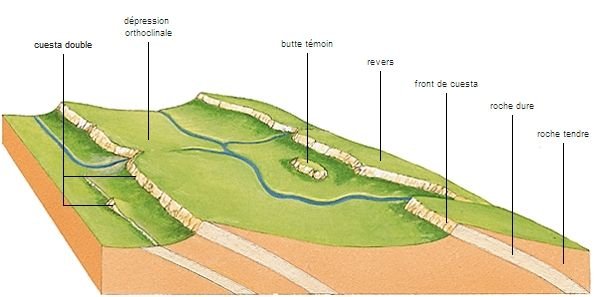Everyday Geography #2 Meandering, braided and straight rivers
Introduction
Hi there! In a previous post I described the many types of dunes you could find on earth and how they are formed. In this second article of Everyday Geography I would like to show you what types of rivers you can find and how these come to existance. Water that falls out of the sky has to flow back to the ocean one way or another, but how it does this varies so much with the geographical location.
factors
First of all it is important to notice that there are no well defined borders to this classification because an individual river can be situated between various categories.
The most important factors that define how a river flows are the slope gradient, size of the sediment and the amount of sediment in the river. These factors are often interconnected since a high slope gradient often correlates with large grain sizes as fine sediments would have been transported already.
Source: An Introduction to Physical Geography and the Environment - 3rd Edition (2012)
How meanders are formed
Meanders are very common river morphologies and when these are understood, all other types are easily understandable.
Assume a straight running river that can flow freely. A small imperfection such as an obstacle, a trampled river bank or a hole dug by an animal near the river can cause a dent in the flow of this river. This dent will be exaggerated by this change in flow direction because erosion occurs where local water speed is high (outside of meander) and sedimentation occurs where the speed of the water is low (inner side of the meander). This is illustrated in the following image.

This exaggeration of existing meanders can result in the cut off of a meander, resulting in an oxbow lake. Over time this will get filled with sediment and/or organic matter so the lake transforms to a depression. These old meanders can often be seen in the vegetation pattern near the river area.

Braided rivers
When a river described as earlier carries a lot of sediment (large=bed load or small=in suspension), this sediment will form banks in the river causing the river to flow around the bank as these grow in size. When the sediment forming these banks is rather small (sand, silt or clay), vegetation on these banks can grow resulting in the stabilization of these banks. As this happens we no longer speak of banks but of islands (first image). This vegetation can furthermore capture sediments, enlarging the island.

When the sediment forming these banks are rather large rocks, the banks are unstable and unable to capture vegetation. The banks are unstable, bare and can move with the flow of the river.

Straight rivers
Now we have seen how meandering and braided rivers are formed, but how can some rivers run straight trough the landscape? If we neglect to possibility of a man made channel, one reason can be that there is a large slope gradient. When the slope is steep, little meanders are formed as obstacles or bends in the flow direction are quickly reformed to a straight flow due to the erosive power of rapid flowing water.
Rivers also deviate from this meandering or braided pattern when they cannot flow freely and follow a certain geological feature. Some rivers can flow inside an already existing valley or fault, or follow the slopes of the terrain.

Special: Incised meander
Another noticeable river type is an incised meander, a meandering river that has cut a deep canyon. since meanders can not evolve in the hard rocks that make up the canyon, we do not expect it there. What happened here is that the river evolved on a soil that did allow meanders to form. When this soil continued to erode, the river cut the harder underlying rock, fixating its flow. This cut has been deepened in the following thousands of years and results in a meandering canyon.

Conclusion
There are a large amount of different river types because of the differences in geology, topography or sediment supply. Next time you see a river, make sure to identify it and let me know! If you have any questions or remarks, don't hesitate to leave a comment.
Sources
An Introduction to Physical Geography and the Environment - 3rd Edition (2012)
Nice post, but is there a need to call a river straight when in reality it is not.
check out my post on my country's ecosystem. https://steemit.com/geography/@donfelix/the-plight-of-nigeria-s-ecological-system
Thank you! Of course these are just classifications to quickly asses the environment in which a river flows and it is self evident that a natural river never flows completely straight. I like your post by the way!
Congratulations @samve! You have completed some achievement on Steemit and have been rewarded with new badge(s) :
Click on any badge to view your own Board of Honor on SteemitBoard.
For more information about SteemitBoard, click here
If you no longer want to receive notifications, reply to this comment with the word
STOP@OriginalWorks
The @OriginalWorks bot has determined this post by @samve to be original material and upvoted it!
To call @OriginalWorks, simply reply to any post with @originalworks or !originalworks in your message!
Congratulations @samve! You have completed some achievement on Steemit and have been rewarded with new badge(s) :
Click on any badge to view your own Board of Honor on SteemitBoard.
For more information about SteemitBoard, click here
If you no longer want to receive notifications, reply to this comment with the word
STOP